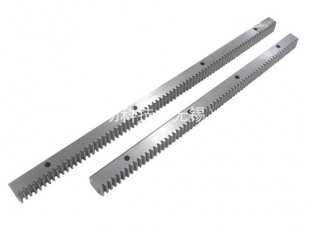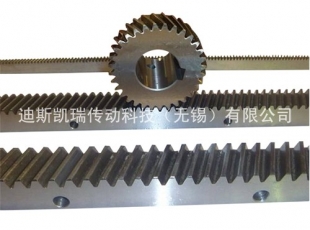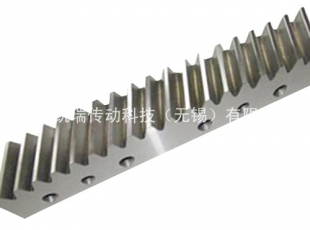Analysis of the Whole Process of Gear Processing
Analytical gear manufacturing technology is the key to obtain high-quality gears. The working conditions of gears determine the different structure shape and precision grade. In addition, the different production conditions make the processing technology of gears different. But generally speaking, gear processing can be divided into four stages: gear blank processing, gear surface processing, heat treatment and gear surface finishing.
Gear blank processing
Gear blanks are mainly forgings, bars or castings, among which forgings are widely used. The gear blank processing plays an important role in the whole gear processing process. The inner hole (or journal), end face or outer circle of the gear blank are often the benchmark of gear processing, measurement and assembly. The accuracy of the gear blank has an important impact on the gear processing accuracy. First of all, the blank should be normalized to improve its cutting type and make it easy to cut; the remaining control of the tooth blank is also very important, too much of the remaining will lead to the subsequent increase in the amount of processing, reduce production efficiency; too little surplus; subsequent processing needs special caution to ensure that the accuracy of gear size within the design range.
Tooth surface machining
Tooth surface processing should follow the requirements of gear design, first roughly shape the blank, retain more surplus; then semi-finish processing, turning, hobbing, shaping, so that the basic shape of the gear. Tooth surface processing can be divided into forming process and forming process.
1. Tooth surface forming process:
The forming method of tooth surface refers to the use of forming tools to process the workpiece. Gears manufactured by this method have low precision and can only be used in low-speed environment. The common processing methods of forming method include milling teeth, forming shaping teeth, drawing teeth and forming grinding teeth, among which milling teeth are more commonly used. Milling teeth refer to the method of directly cutting gears on a milling machine with a shaped gear milling cutter. Milling teeth are characterized by easy processing and low cost, but their productivity and accuracy are relatively low.
2. Tooth Surface Generation Processing:
Generative machining refers to the method of generating cutting motion by means of workpiece and cutter. It uses the meshing motion of gear pair to realize the cutting of tooth profile. The common processing methods of generating method are hobbing, shaving, honing and grinding, among which hobbing and shaping are the most common. Generative processing requires professional gear processing machine tools with high processing accuracy.
Hobbing: Hobbing gear can be regarded as gear and rack transmission without meshing clearance. When the hobbing gear rotates for a week, it is equivalent to the rack moving a cutter tooth in the normal direction. Hobbing is a widely used cutting method at present. It can process involute gears, circular arc gears, cycloidal gears, sprockets, ratchets, worm gears and envelope worm, and its accuracy can generally reach DIN4-7 level. At present, the advanced hobbing technologies include multi-head hobbing, hard surface hobbing, large gear hobbing and high-speed hobbing.
Gear shaping: Gear shaping is especially suitable for processing internal gears and multiple gears. With special cutters and accessories, silent sprockets, ratchets, internal and external splines, toothed belt pulleys, sector gears, incomplete teeth, special teeth bonders, racks, end gears and taper gears can also be processed. At present, advanced gear shaping technology includes multi-cutter gear shaping technology, computer numerical control gear shaping machine, hard gear shaping technology, etc.
Heat treatment process
The heat treatment of gears directly determines the internal quality of gear teeth. The tooth profile processing and finishing after heat treatment are the key to manufacturing, and also reflect the level of gear manufacturing. The quality of heat treatment process will directly affect the strength, accuracy, noise and life of gears.
finish machining
Different working conditions and different failure modes of gear teeth are the basis for determining strength calculation criteria and selecting materials and heat treatment of gears. At present, the main methods of gear finishing used in industry are shaving, grinding, extruding, lapping and honing.
Shaving is to use a shaving cutter to shave teeth on a shaving machine. It drives the machined gears to rotate relatively, depending on the relative sliding of the tooth surface. The shaving cutter cuts a very thin layer of metal on the tooth surface, and completes the finishing of the gears. The shaving accuracy is limited by the precision of the shaving front teeth. Shaving production efficiency is high, suitable for finishing soft tooth surface after hobbing and shaping.
Grinding teeth is to grind the tooth surface with grinding wheel. Grinding teeth can grind hardened gears, eliminate heat treatment deformation and improve gear accuracy. According to the different grinding wheels used, it can be divided into: (1) conical grinding wheel grinding; (2) butterfly grinding wheel grinding; (3) large plane grinding wheel grinding; (4) worm grinding wheel grinding; (5) involute envelope hourglass worm grinding wheel grinding; (6) forming grinding wheel grinding.
Extrusion is the use of extrusion wheels to extrude the tooth surface of the processed gear to improve the surface quality of the gear. It is mainly suitable for finishing soft tooth surface gear after hobbing and shaping.
The method of honing is basically the same as that of shaving, that is, the same shape of the honing wheel is replaced by the shaving cutter, and the tooth surface is polished by relative sliding with the tooth surface. The tooth surface of the machined gear can be both soft and hard.

The cutting-edge gear processing technology, brilliant fight!
Publication time:2019-10-09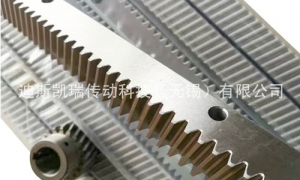
Development Trend of Gear Processing Technology and Equipment
Publication time:2019-10-09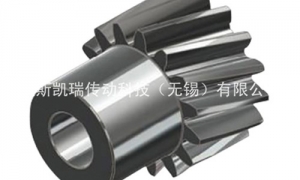
Some Key Points to Be Noticed in Gear Processing and Manufacturing
Publication time:2019-10-09
Why do we always want to do Gear processing, but we cant do it well?
Publication time:2019-10-09
Development Trend of Gear Processing Technology and Equipment
Publication time:2019-10-09
Introduction of Gear Processing
Publication time:2019-10-09
Common Defects and Solutions in Gear Hobbing
Publication time:2019-10-09
Several Key Technologies in Rack Grinding Machine
Publication time:2019-10-09
What is gear machining?
Publication time:2019-10-08
The Advantage of Rack Processing Roller Rack in Motion Mechanism
Publication time:2019-10-08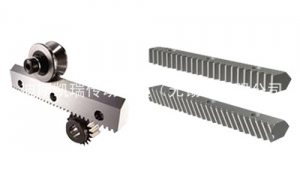
Introduction to the Characteristics and Parameters of Rack Machining Rack
Publication time:2019-10-08
Common Materials for Gear Processing
Publication time:2019-10-08
1The cutting-edge gear processing technology, brilliant fight!
2019-10-09

2Development Trend of Gear Processing Technology and Equipment
2019-10-09

3Some Key Points to Be Noticed in Gear Processing and Manufacturing
2019-10-09

4Why do we always want to do Gear processing, but we cant do it well?
2019-10-09

5Development Trend of Gear Processing Technology and Equipment
2019-10-09

6Introduction of Gear Processing
2019-10-09


